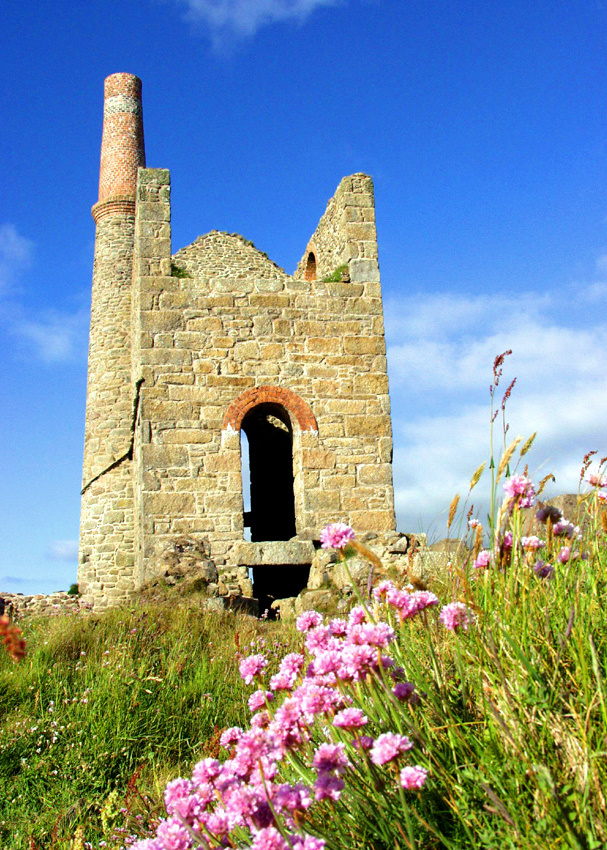Nineteenth century Methodists were preoccupied with the saving of men’s souls, but one of their devout members successfully saved many thousands of miners’ lives in a physical sense. The story of how four members of Tuckingmill Methodist Chapel invented, developed, manufactured and then successfully market-ed safety fuse, for safe gunpowder blasting in mines, is a truly remarkable one. Since its first use in Cornwall, in the late seventeenth century, gunpowder (black powder) had been manufactured “up-country” and purchased by Cornish mines at a very high price. The Somerset makers were aware of the Cornish need and their own monopoly and charged exorbitant prices, which, together with the high cost of carriage severely injured the mine adventurers. By about 1800 the Cornish had decided to make their own black powder, and in 1809 the first powder mill was set up in the woods of Cosawes Valley, near to Ponsanooth. The thick woods in a narrow, steep-sided valley, together with an abundance of water power, made it an ideal location for black powder manufacture. The buildings were easily dispersed among the trees and isolated for safety. Within a few decades such factories had sprung up in most mining districts and the cost of explosives had dropped dramatically. From the first introduction of gunpowder into Cornish mines there had been a high toll in injury and death from blasting accidents. Breage Burial Register for 1689-91 records the introduction of shothole blasting into Great Work Mine, and the subsequent death of Thomas Epsley who taught the locals its use. He may have died in a blasting accident. The first definite reference to a death due to a blasting accident was in 1691, when John Archer was killed at Trebollans Mine, Germoe, “shuting the rocks”. This term for blasting persisted in Cornwall until the early nineteenth century. As the use of black powder spread throughout the mining districts so did the incidence of death and injury. Loss of eyes and fingers became common, and maimed miners as a result of blasting accidents could be seen in every town and village. The methods of introducing the flame to the powder charge were primitive, with the use of goose quill “rods” perhaps the safest and most widespread. This consisted of cutting lengths of hollow quill and filling them with bruised powder. The quills were then connected by pushing the thinnest end of one into the thickest end of the next, and so on. These “rods” frequently fired prematurely, resulting, all too often, in death or injury. All this was to change with the intervention of the Tuckingmill Bible Class. William Bickford, who owned a small leather business in Tuckingmill, was a Devon man, and he had long been pre-occupied with the many maimed miners around Camborne. He tried various designs, mostly using leather and parchment, to create a safety fuse. None worked. One day he visited a friend and fellow Bible Class member called Bray. Bray was a rope maker, and as Bickford chatted to him, Bray walking backwards and spinning the yarns, Bickford suddenly had a brilliant idea. Why not pour the bruised powder into the yarn as it was spun, thus enclosing the gunpowder in a continuous, unbroken line? The two men recruited Bickford’s son-in-law, George Smith, a carpenter, and another class member, Thomas Davey, a miner with an aptitude for solving knotty problems. The four men ironed out the practical problems of safety fuse manufacture, which was patented by Bickford in 1831, and the rest (as they say) is history. After initial resistance the safety fuse of William Bickford and his humane and devout Methodist friends became the standard method of introducing flame to blasting powder throughout the world. Bickford fuse factories sprang up in several countries abroad and other companies also used Bickford’s system success-fully. The factory in Tuckingmill where safety fuse was made for nearly 130 years, and which bears the plaque remembering that great invention, continued at the centre of safety fuse manufacture until 1961, when it closed and I.C.I., who owned it, moved its operation to South Africa. One irony of safety fuse making is the number of workers, many of whom were women, who lost their lives due to explosions in these safety fuse factories. Despite this sad fact, the enormous number of lives which must have been saved, as well as injury and suffering prevented, by the invention and humanity of those Tuckingmill Methodists, is incalculable.
